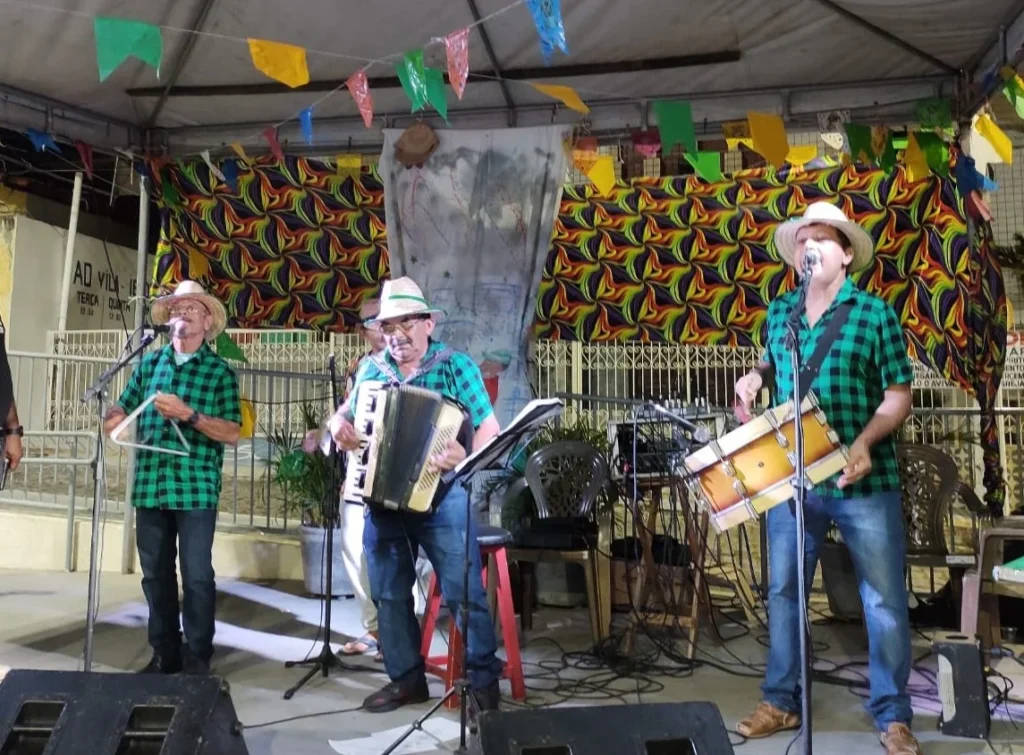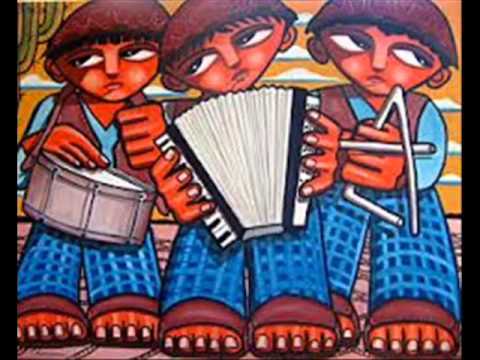Triangle, Accordion, and Zabumba: The Foundation of Forró Pé-de-Serra – Forró Pé-de-Serra in the Northeast
The Growth of Forró Pé-de-Serra
Forró pé-de-serra is the fastest-growing musical style in Brazil today. There are specialized forró houses and a true recording industry exploring this rhythm throughout the country.

Popularity in São Paulo
In São Paulo, forró has become a craze. However, the presence of DJs and the mixing with other rhythms often detracts from the authentic forró, which is characterized by the dragging of baião and xaxado. Inevitably, forró has various branches, such as forró from Ceará, electronic forró, and university forró. However, only one style has stood the test of time: pé-de-serra, which consists of groups of three to five members.

Triângulo, sanfona e zabumba são a base do forró pé-de-serra
The Origin of Forró Pé-de-Serra
The origin of forró pé-de-serra traces back to the musical and dance traditions of the Brazilian Northeast, influenced by various cultures, including Portuguese, African, and Indigenous. The term “forró” is often associated with the English expression “For All,” reflecting the inclusive nature of the parties and dances that took place in rural communities.
Consolidation as a Musical Style
In the early 20th century, forró began to solidify as a distinct musical style, especially during the June festivals that celebrated harvests and were marked by circle dances. These dances were similar to quadrilhas and involved the participation of peasants, creating a festive environment where music and dance were essential.
Development of Forró Pé-de-Serra
Forró pé-de-serra developed from a combination of rhythms like baião, xote, and xaxado, utilizing typical instruments such as the accordion, zabumba, and triangle. Over the years, this musical style has been associated with great names, such as Luiz Gonzaga, who popularized forró throughout Brazil in the 1940s, elevating it to significant cultural status.
The Main Musical Instruments
The main musical instruments used in forró pé-de-serra include:
- Accordion: The most emblematic instrument of forró, responsible for creating the characteristic melodies of the genre.
- Zabumba: A large drum that provides the essential rhythmic beat for forró, played with hands or sticks.
- Triangle: A small metal instrument that produces a bright, high-pitched sound, used to mark the rhythm.
- Guitar: Although not always considered a traditional instrument of forró pé-de-serra, the guitar is often used to accompany melodies and provide harmonies.
- Flute: In some formations, the flute adds a light melodic sound, enriching the ensemble’s sonority.
- Pandeiro: A percussion instrument that can be used to add varied rhythms and textures to the music.
These instruments together create the authentic and vibrant sound of forró pé-de-serra, being fundamental to the identity of this musical style, which is a significant cultural expression of the Brazilian Northeast.
Challenges and Transformations
In the following decades, forró faced challenges and transformations. In the 1980s and 1990s, new branches emerged, such as electronic forró, which brought modern influences and attracted a younger audience. Despite these changes, forró pé-de-serra maintained its essence and continued to be an important form of cultural expression, especially during festivals in the Northeast.
Emblematic Celebrations
Events like São João are emblematic celebrations that bring communities together around music and dance. Today, forró pé-de-serra is recognized for its authenticity and resilience, preserving its roots while continuing to evolve, attracting new artists and listeners in various parts of Brazil and beyond. The music and dance of forró pé-de-serra continue to celebrate Northeastern culture, being a symbol of identity and tradition for many.
Differences Between Forró Pé-de-Serra and Traditional Forró
The difference between forró pé-de-serra and traditional forró can be understood in several aspects:
1. Musical Style
- Forró Pé-de-Serra: A more authentic and traditional form of forró, characterized by its dragging rhythm and typical dances, often associated with interior parties.
- Traditional Forró: Refers to a variety of styles, including forró pé-de-serra, but also encompasses other branches that may incorporate modern elements.
2. Instrumentation
- Forró Pé-de-Serra: Utilizes traditional instruments such as the accordion, zabumba, and triangle.
- Traditional Forró: May include other instruments or influences, especially in more modern variants like electronic forró.
3. Cultural Context
- Forró Pé-de-Serra: Deeply rooted in popular festivals of the Northeast, representing a form of cultural resistance and preservation of Northeastern identity.
- Traditional Forró: Encompasses different styles and influences, reflecting the evolution of the genre over time.
4. Popularity and Evolution
- Forró Pé-de-Serra: Has seen a resurgence in recent years, focusing on preserving its roots and traditions.
- Traditional Forró: Includes styles that may be more commercialized, reflecting current trends such as electronic forró.
Musical Evolution
Forró pé-de-serra has evolved over time, incorporating new rhythms and influences while always maintaining its essence. Since the times of Luiz Gonzaga, the style has included elements from other genres, such as Brazilian popular music (MPB) and even rock, without losing its identity. This evolution has allowed forró to modernize and become more accessible to different audiences while still preserving the traditions that made it famous.
Dance Style
The dances accompanying forró pé-de-serra are a fundamental part of the experience. The xote, baião, and xaxado are the most common dance styles, each with its own steps and rhythms. The xote, for example, is a slower dance, ideal for couples, while the baião is more energetic and lively. Dances are often performed in circles or pairs, promoting social interaction and collective celebration.
Triangle, Accordion, Zabumba, and Forró Pé-de-Serra
Bahia.ws – Guide to Tourism and Travel in Bahia, Salvador, and the Northeast
Publicações Relacionadas
Musical Style and History of Samba de Roda
Olodum with Michael Jackson in Salvador de Bahia
Music and Rhythms of the Brazilian Northeast
Gal Costa: Biography of a Musical Icon
Elba Ramalho: A Journey Through Music History
Alcione: The Journey of a Music Icon
Alceu Valença: A Journey Through His Music
The History of Forró: Origins and Development
Origins and evolution of forró in São João festivities
Biography of Simone Bittencourt
Jackson do Pandeiro: The King of Rhythm and his Music
Biography of Morais Moreira
History of Bossa Nova - When Bossa Nova conquered the world
Biography of Caetano Veloso
History of the Salvador Carnival
Biography of Maria Bethania
Biography of Daniela Mercury
João Gilberto: The Father of Bossa Nova
This post is also on:
![]() Português
Português ![]() English
English ![]() Deutsch
Deutsch ![]() Español
Español ![]() Français
Français



















